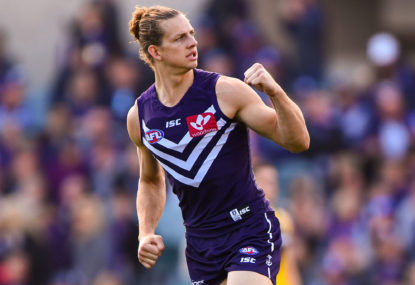The longest preseason in the AFL’s history ends tonight. And after the torrent of frankly bizarre statements and news stories about the league and its whiteboarding sessions over the past week, it is not before time.
Here’s one writer’s view on the season ahead.
Last year’s predictions were certainly crazy. Port going sideways? Nah. Patrick Cripps winning 200 clearances? Nope. A twilight grand final? Nuh-uh. All up I went a combined 7-1-14, with most of the misses to do with finishing positions of a bunch of teams.
Let that not dissuade us. After all, the whole reason I write about football is to make observations that help inform predictions. If I wasn’t, I’d be writing about football as a soap opera, and there are plenty of blowfish swimming in that pool.
Let’s go, starting with a whopper.
There will be a new Brownlow medallist
The Angel of Mean Regression will call in her loan to Patrick Dangerfield and Dustin Martin, who’ve put together three (2017 for the former, and 2016 and 2017 for the latter) of the most outlier-ey seasons in the AFL’s history.
Nat Fyfe will be back to his best but I can’t see Fremantle winning enough games for him to get close to the 30-odd votes required. Gary Ablett Jr might win if the criteria were votes per games played. Trent Cotchin is on everyone’s radar once more after a stellar finals series – and the Tigers project as one of the better teams in the league right now – but Martin is the man.
Those five players are the game’s current Brownlow medallists. I suspect there will be a sixth man come the end of 2018.
There are candidates everywhere. Adelaide’s Rory Sloane, any number of Sydney Swans, any number of GWS Giants, Hawthorn’s Tom Mitchell. Scott Pendlebury and Joel Selwood are two of the better modern midfielders never to win the award. That field is strong, and there are cases to be made for all of them.
Marcus Bontempelli is my pick.
The Bont is entering his fifth season in the league, and will pass the 100-game milestone (assuming all goes well) against Hawthorn in Round 17. He has few teammates to pinch votes from him (he was the only Dog in double digits last year with 19 – in second was Jack Macrae on eight), and plays most of his football in the eye-line of the umpires.
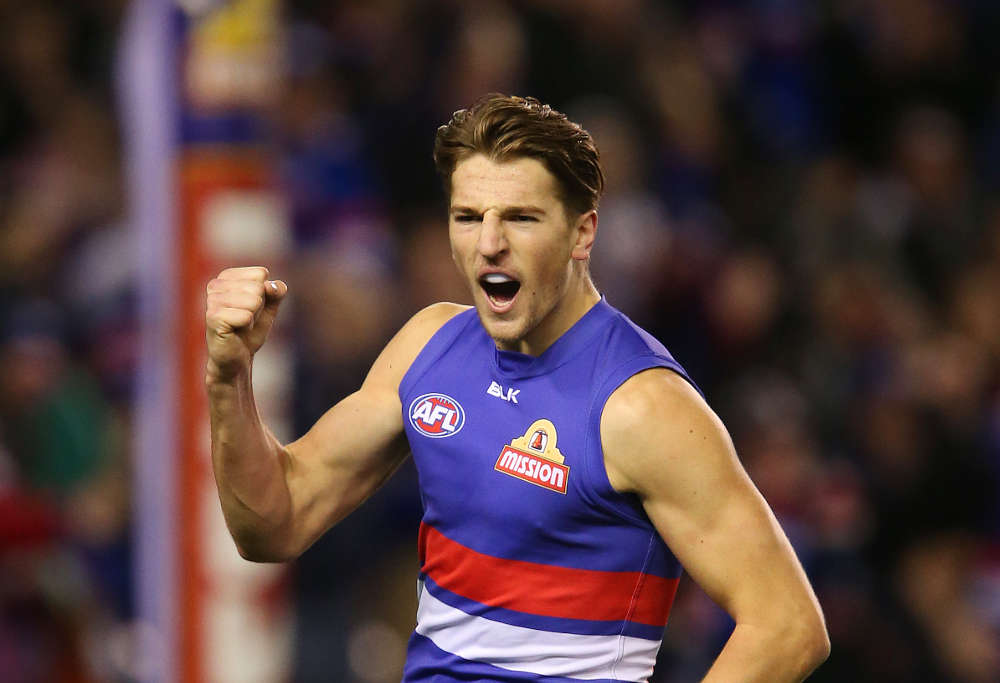
Fyfe won his Brownlow in his sixth season, but his voting trended up in the second half of 2014 as he approached the 100-game mark. Between games 81 and 102 (game 91 and 92 were finals), Fyfe polled 39 votes from 20 games. Bontempelli only has to get two thirds of that to be well in the hunt.
The query will be whether the Dogs will win enough games. West Coast’s Matt Priddis won the 2014 medal when the Eagles went 11-11, albeit in a year where Ablett played two thirds of a year, and Fyfe only hit his straps in the second half of the season.
There is also some uncertainty – dread among Bulldogs fans – regarding role: will Bontempelli play a chunk of his time in the forward 50 arc? One assumes not, which’ll put him firmly in the frame.
Does that count as two predictions? Yeah probably. To cover it off…
Marcus Bontempelli will win the 2018 Brownlow medal
Right, on to the next one.
Melbourne will finish inside the top six, and win the club’s first final in a football generation
We covered off on Melbourne before they were the fashionable choice for finals leaper. Suffice to say what I have seen in the preseason has not dissuaded my view: Melbourne has what it takes to take a big stride forward in 2018.
They loom as the best-of-the-rest of last season, and a logical choice to take a place in the eight from one of the weaker sides that lasted to September last season. Indeed, Melbourne only missed last year’s final eight by a straight shot for goal, so predicting they can be a hair better isn’t particularly bold.
Instead, I see the Dees as making it into the top six – hitting around 13 wins at a minimum, in what looms as another year with a relatively egalitarian distribution of wins and losses – and handling at least one of the hangers-on come September time. They could certainly make it into the top four, but that group looks mighty settled.

Richmond will not slide down the ladder, and will remain in the top four
Their draw is more challenging, and they are now the hunted, but otherwise the signs are all suggesting Richmond is one of the best four teams coming into 2018. There will be no premiership hangover, because as we discovered in the preseason Tigers column there has only really been two premiership hangovers ever.
Greater Western Sydney, Adelaide and Geelong also look solid from here. Unlike the past few years, there is no clear cut regression candidate in the top four. Each has a reason to be positive about the year ahead versus last: GWS a better run with injury, Adelaide the injection of another top flight midfielder, Geelong the benefits of getting a little smaller.
Richmond, though, don’t need to change a thing to remain competitive. And that’s why they loom as the most likely of last year’s top four to hold their place.
Bryce Gibbs and Matt Crouch will lead the league in disposals for a pair
I’m trying to make amends for last year’s disastrous pick for disposal-winning-duo (it was Matt Priddis and Sam Mitchell by the way, who would’ve finished 16th if they’d have led West Coast, who were ultimately led by Andrew Gaff and Luke Shuey).
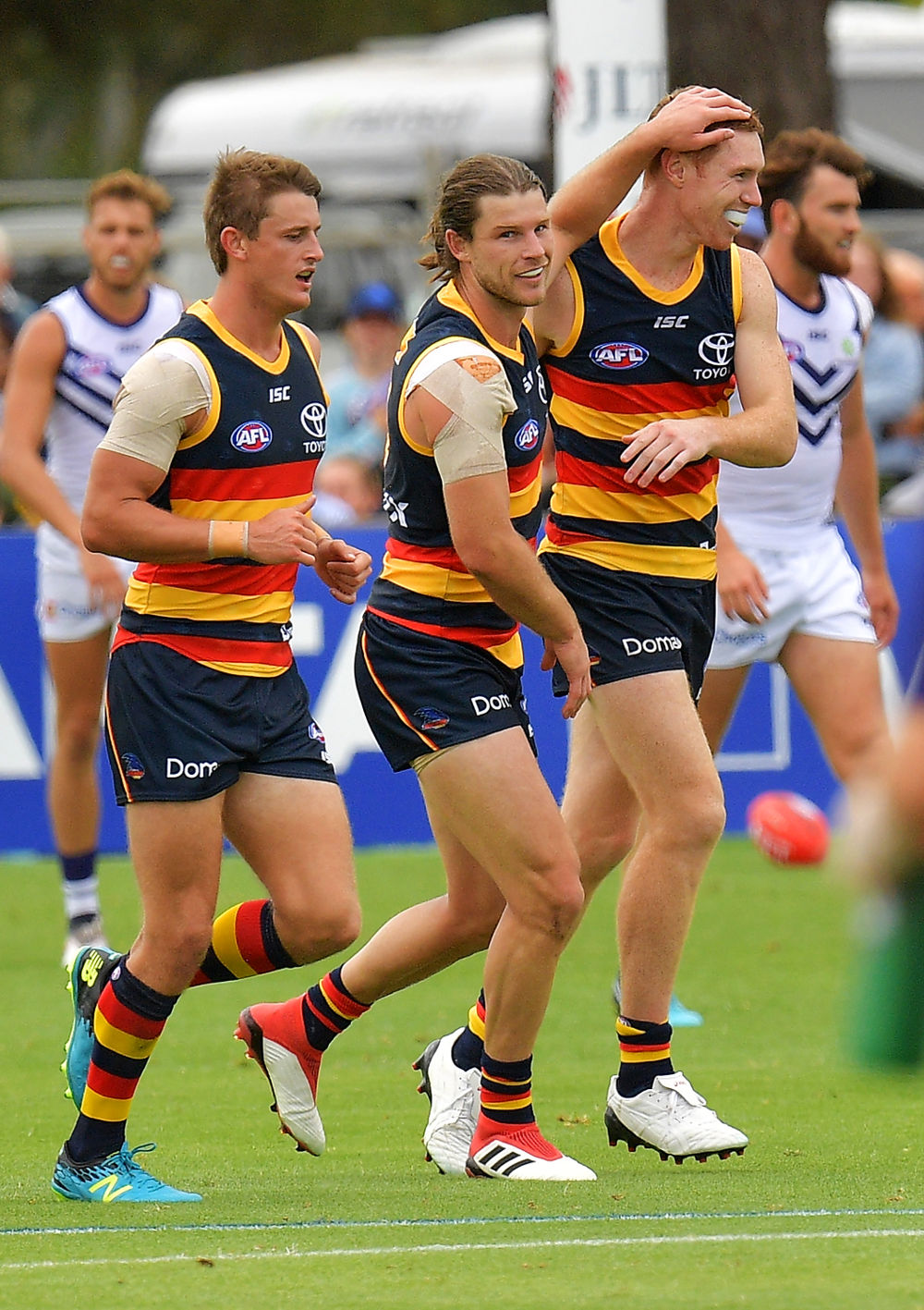
(Photo by Daniel Kalisz/Getty Images)
Last year’s winners were Matt Crouch and Rory Laird, who finished with 1,561 disposals between them across 50 games.
This year, I think it will be Crouch once again, but with Gibbs as the second banana. The thinking is Laird’s midfield minutes will dip a little as Gibbs jumps into the centre.
The Sydney Swans will win at least four more games than they lose
This one is like shooting fish in a barrel. Sydney have become the San Antonio Spurs of the AFL, the team which personifies off field excellence and on-field competence.
There is a reasonable chance the Swans get off to a wobbly start on account of their draw – they play West Coast (A), Port Adelaide (H), GWS (H), the Western Bulldogs (A), Adelaide (H), and Geelong (A) – but their draw opens up meaningfully thereafter.
Four more wins than losses would be a 13-9 record or better. They’ve hit that mark for six straight years, even after last year’s 0-6 start. Did you see last year’s predictions? I need some gimmes.
Patrick Cripps will break 200 clearances
I’m going back to the 2017 well for this one. Cripps’ season was derailed by injury last season – not so in 2018. Only one player has ever broken 200 clearances in a season: Brett Ratten, who had 265 in 26 games in 1999. Sydney’s Josh Kennedy has the next three highest totals (191, 190 and 187), with Cripps coming in fifth on 185.
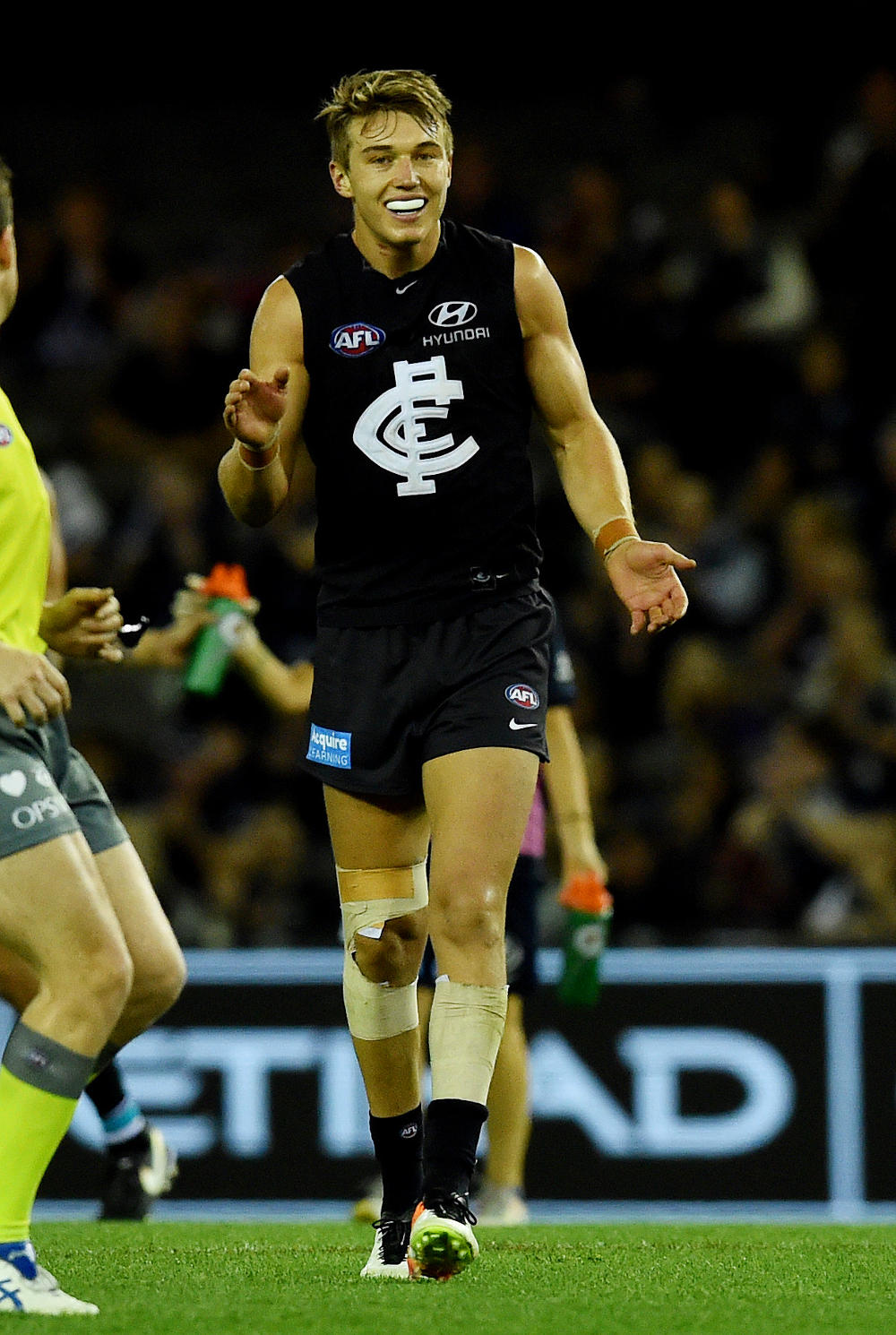
This season, Cripps will get the 9.1 clearances per game required to see him break the 200 barrier. He is an inside animal, and with the loss of Bryce Gibbs (who led the Blues last season with 112 clearances per game), I expect Cripps will take up more of the load. Matthew Kennedy and Darcy Lang will help, but don’t have the heft of the Cripps. Any experiment with him in the forward line will be short lived, because Carlton will need him in the guts.
Nat Fyfe will kick 30 goals
Another stats-based prediction, centred on this notion that coaches are going to start to be more liberal with their line ups when a midfielder has the capacity to take marks and kick goals. Fremantle’s Nat Fyfe is the archetype in many ways; strong, agile, extremely good overhead, and a difficult match up for most defenders one on one.
The Dockers still don’t have a solid answer to their perennial forward line question. Fyfe is an obvious solution, but while he is still in his midfield-dominating prime age, pinch hitting will have to do. He kicked 2.0 and 1.2 in Fremantle’s two preseason outings, spending time at centre half forward on both occasions.
Fyfe will do that in spurts throughout the year, and kick at least 30 goals.
The midfielder-as-a-forward trend will fade quickly
Teams will realise early on that it takes more than being big and strong to take marks and kick goals as the focal point in a forward line. The reason Patrick Dangerfield, Dustin Martin and Nat Fyfe can do it is because they are high quality one on one players no matter where they play.
We know from preseason chatter that a number of coaches are going to turn to their top line midfielders as forward line change ups. It won’t last long.

Port Adelaide will have the league’s most potent attack
After loading up on attacking players, it is clear Ken Hinkley and his crew are doubling down on the notion that attack is the best form of defence.
The Power have a deep rotation of forward line and midfield players, and can throw all sorts of different looks at their opponents. A three-headed monster of Charlie Dixon, Justin Westhoff and Jack Watts looks set to be the club’s base look, with Robbie and Sam Gray anchored to the forward 50. But then Port has Chad Wingard, Tom Rockliff, Travis Boak and Ollie Wines to rotate through the middle and midfield-forward positions.
Watts can go to a wing and Westhoff drift back, and suddenly the Power have a smallball set up at the ready. Steven Motlop, who looks set to play a set up role rather than play as a forward, can play inside 50 too. That’s to say nothing of the club’s forward half depth.
Adelaide showed last season that kicking 100 points a game consistently can be the best form of defence. The attitude is simple: go with us if you dare. The Crows will be a high scoring team again, but I suspect Port Adelaide will score more.
Just quietly, what a turn of events for the Power. This time last year sentiment towards Port Adelaide was at a seriously low ebb; now Port are being talked up as a premiership threat. The club appears to have managed the CBA cap spike better than any in the league, and have a list that’ll put them in the frame for a couple of years yet.
Excluding the Showdowns, the South Australian teams will lose a combined three games at the Adelaide Oval
Collectively, the Crows and Power have a challenging set of opponents at the Adelaide Oval this year: GWS, Richmond, Melbourne, Geelong, West Coast and the Western Bulldogs twice, and plenty of last year’s bottom feeders once.
I calculate the Crows and Power had a combined home ground advantage of 13.5 points per game at the Adelaide Oval last year. Combine this with Adelaide’s continued strength and Port Adelaide’s improvement, and I reckon the ground will become a stomping ground.

Brisbane will jump out of the bottom four, for the first time since 2013
The Lions improved their defence by 14 points per game last year – from historically awful to just plan bad. That was simply on account of improved coaching and better defensive positioning; their personnel, the youngest defensive group in the league, remained almost completely unchanged.
Now, to be clear, Brisbane still have a lot of ground to make up. While the club’s defence improved, it was still the worst in the competition by nine points per game. Their inside 50 differential was -14.9 per game, a figure which is simply never going to allow a team to produce wins on a regular basis.
Lurking deep in the play is a competent forward half that makes the most of the relatively meagre opportunities afforded further up the ground. Brisbane scored on 49 per cent of their forward 50 entries last year (ranked fourth in the league), and were only a little worse than average in converting possession to points. Brisbane do this by playing aggressively with ball in hand, in a way not dissimilar to how Richmond went about its business last season.
That’s fine, so long as the team is willing to run as hard back as they are forward. Brisbane also had a tendency to get beaten up around the contest, a product of small bodies and a midfield rotation forced to rely on depth which hasn’t really been there.
But there are plenty of reasons for optimism.
First, the club’s injury list is short. The club has two players on the league’s official register: Marco Paparone who is listed as a test, and Sam Skinner who injured his ACL in 2017. For the first time in their current iteration, the Brisbane Lions look set to roll out a full strength midfield, which will go some way to giving it the means to correct the awful inside 50 differential.
Luke Hodge will help Brisbane’s defence improve again – not directly through his play, although that’ll potentially help, but with his on-field coaching. Another goal a game reduction would be the minimum expectation, with more possible if the midfield can help keep the ball out of defensive 50.

Meanwhile, the club’s fixture difficulty has ratcheted down, and the away slate looks particularly generous. Brisbane looked sharp with ball in hand during its two preseason games, albeit the second game was a wet weather write off.
There is enough there for me to back the club in to break its run of bottom four finishes. An extra win or two is all it should take.
Dane Zorko will finish inside the top ten for goals kicked
That’ll take around 50 goals. With a deeper Brisbane midfield rotation, I expect Zorko will spend more of his time as a forward, and will kick 50 goals for the year.
There will be executive level change at AFL House
To be clear up front, I have no inside information on this. This is pure personal opinion, based on my read of the play. My expectation is based on two factors.
First, the AFL as an entity seems to have developed a hyperactive personality disorder over the past six months, flying kites on a daily basis and leaking half finished ideas to the media like they’re trying to hit some sort of arbitrary KPI. The most egregious examples sit at opposite ends of the impact spectrum, but are equally bonkers:
– misreading their fan-base by re-recording club songs which fans have a visceral, emotional connection to; and
– attempting to introduce a mid season trade period or mid season draft this year, without any interest from the clubs or players
In both cases, the AFL appears to be acting unilaterally to do things that it sees as priorities but that its stakeholders – the fans and clubs – do not see as necessary. It hints at a disconnection from what matters – that the AFL is now doing things because it needs things to do rather than doing things in the best interests of the competition.
Second is the ascension of Richard Goyder to the position as AFL Commission Chair. This is important because Goyder is the first chair who is not a ‘football person’ – that didn’t play professional football. He is a businessman first and foremost, and led Australia’s most successful conglomerate for more than a decade.
This is significant because Goyder’s calling card is professionalism and strong corporate governance, two aspects of business the AFL could use a dose of. Combine this with the AFL’s recent sporadic behaviour, and the fact that the league’s operational expenditure has been growing significantly over the past ten years, and I anticipate Goyder will be keen to make his mark on the league’s administration.
A mid-season draft will be announced, and will take place in 2019
In saying this, the league’s administrators seem pathologically intent on introducing some kind of player movement mechanism in the middle of the year. For now, I expect it will be a draft, and not a trade period.
A mid-season trade period simply won’t work in the AFL, so long as the players hold veto rights on all trades and clubs are butting right up to their salary cap limits on an annual basis.

There is no liquidity in the system. And without proper transparency regarding club salary cap positions and player salaries, there is no way the league could reasonably expect its fans – the people who pay both directly and indirectly for it – to understand what’s going on.
A mid-season draft is simpler to implement. Clubs could be given an extra two list spots, and have the ability to draft players from state leagues to fill gaps in their lists that arise as the season progresses. Those players would then become free agents come the end of the season, although clubs may be afforded some sort of first right of refusal rights to sign their mid season draftees for longer.
It’ll be announced in the middle of the year, and take place some time in the bye period in 2019. Whether it achieves anything is another question all together.
Free agency will be a talking point as all three of this year’s big fish change clubs
Rory Sloane, Tom Lynch and Andrew Gaff will all change clubs, presumably moving back to their native Victoria. We’ll talk about the reasons why throughout the year, but from here each faces a decision which largely centres on future success.
Sloane can reasonably expect the Adelaide Crows to contend for the next two or three years, but he could jump to a Victorian club that is just coming into their contention window and stick around the eight for much longer. There are also personal factors at play, which have been reported elsewhere.
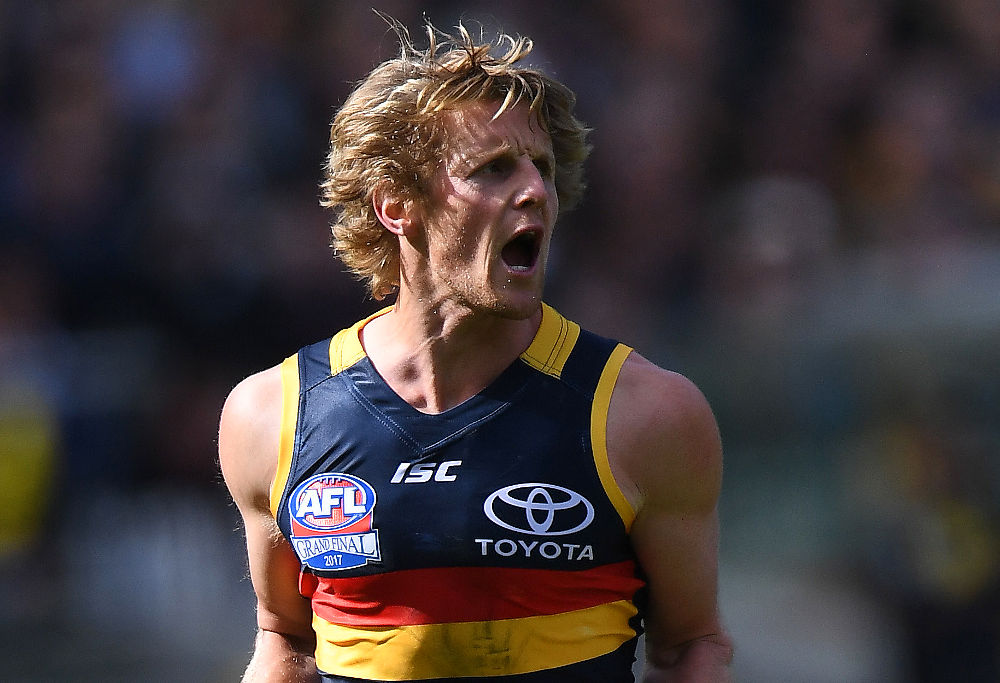
Lynch will sit down with his manager with offers from every club in the land. The Suns’ forward had a down year last year, but his upside is clear for all to see. The wrinkle is cash money; there is no doubt Gold Coast has the means to make him one of Australia’s richest domestic sport athletes.
Gaff’s decision could come down to money, too. West Coast will have made room for him, but one does wonder why his contract has not already been extended if that was the case. If the Eagles are as bad as many seem to think they will be this season, a top band compensation pick (immediately after West Coast’s first pick, or an end of first round pick) would be tempting.
Regardless, I suspect all three will change clubs. And that facile ‘free agency is ruining the game’ discussion will rear its head once again.
The battle for the last two spots in the eight will go down to the last games of the season
Last year’s top six looks pretty settled. The final two top eight spots are extremely wide open.
West Coast and Essendon do not have a firm grip on them; the former could be a big slider, and the latter has a lot of personnel questions as it turns over important parts of its list. Melbourne are the best of last year’s non-finalists and as we’ve discussed should comfortably make the eight.
But then, what do we think of a more settled Hawthorn? Can St Kilda, who’ve been on the bubble for two seasons and are entering year six of their rebuild, make good on the promising signs of 2017? Can Collingwood get out of their own way? Will the Western Bulldogs rise back up after a year of tumult? There are even cases to be made for Carlton, North Melbourne and Fremantle – very different cases but cases all the same.
It is a recipe for a third straight year of uncertainty, and upsets galore. The final eight will not be settled all year, and we will not know who will play in September until the last Sunday of the home-and-away season.

Nic Naitanui will lead the league in hit outs to advantage
Not per game – a raw total. You know it makes sense. It seems impossible, but Naitaniu’s lone All Australian selection came in 2012, which is now five full seasons ago. His return will be an enormous fillip for the Eagles, but it won’t be enough for them to retain their spot in the final eight, particularly given Josh Kennedy looks set to have a delayed start to the season.
Hawthorn will surprise us all and return to the finals fold
Alastair Clarkson has a beard now. That’s good enough for me. On a more serious note, Clarkson openly admitted the Hawks tanked last season once they began 0-4, and showed towards the back half of last year that their style of football holds up.
Their backline looks a sore spot, but otherwise Hawthorn look good to great across the ground.
They will show pace isn’t a prerequisite when you can play disciplined football and have a team full of quality kickers.
Lance Franklin will win the Coleman medal
It’s a boring prediction, but can you blame me? With Josh Kennedy waylaid this is Franklin’s medal, unless one of the league’s young key forwards can take a huge leap. Jesse Hogan is a 20-1 chance right now.
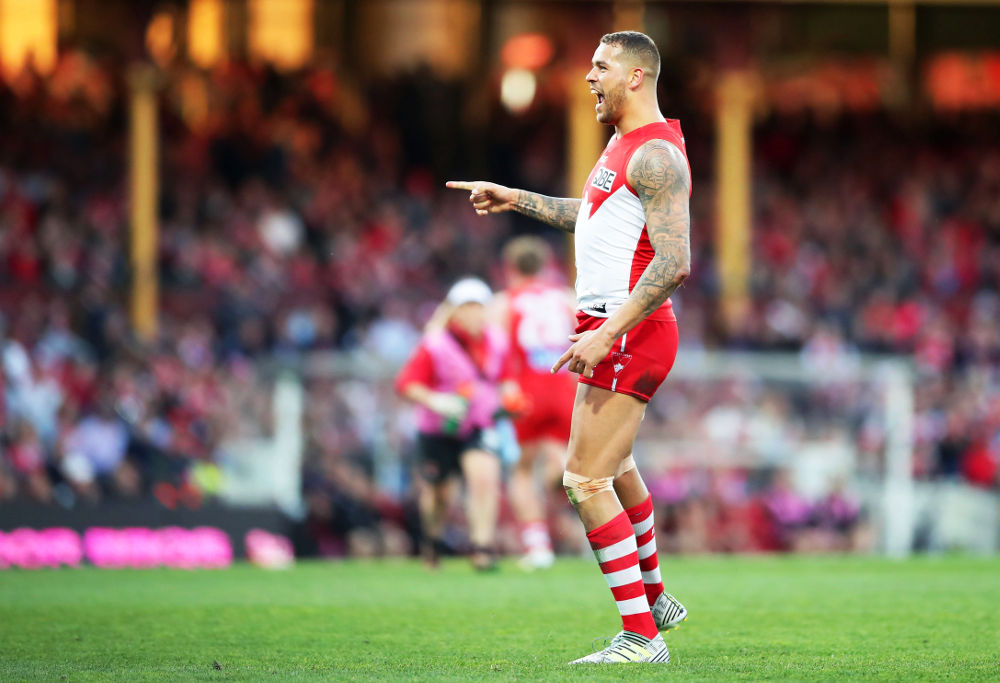
(Photo by Matt King/Getty Images)
The final prediction
I have given up on picking the ladder one to 18. Instead, I’ve grouped the teams into broad finishing positions, to help build something of a margin for error around the results. Here goes everything.
The locked in finalists
Geelong
Adelaide
Richmond
Sydney
The most likely finalists
Melbourne
GWS Giants
Port Adelaide
On the finals bubble
Hawthorn
Essendon
Western Bulldogs
Collingwood
Challenging all year
St Kilda
North Melbourne
Brisbane
West Coast
The bottom of the ladder
Fremantle
Carlton
Gold Coast
If you really must know my a predicted ladder, take that from one to 18 and that’ll get you pretty much there.
There is one thing that’s for certain: what I have predicted above is going to be wildly wrong, because as we’ve talked about for near enough to two years now, we are in an era of rampant parity in the Australian Football League.
It is going to be another season full of excitement, and uncertainty, and I can’t wait for it to get underway.





























































































